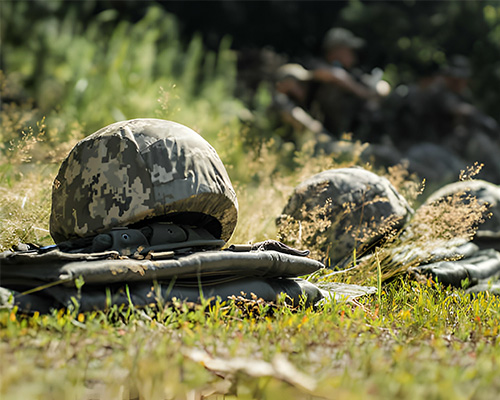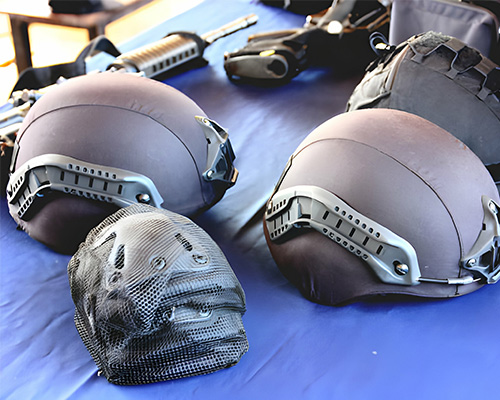What Are Ballistic Helmets Made Of?
In an age where personal protection is paramount, ballistic helmets stand as a crucial line of defense for military personnel, law enforcement officers, and other professionals in high-risk situations. But what exactly are these helmets made of, and how do they provide such reliable protection? Let’s delve into the intricate world of material science to understand the composition of ballistic helmets. (Ballistic Helmets Manufacturer – KMS)
Understanding the Need
Ballistic helmets are designed to safeguard the wearer from projectiles, shrapnel, and blunt force trauma. They serve as a vital component of personal protective equipment (PPE), offering head protection against various threats encountered in combat zones, tactical operations, and law enforcement engagements.

Composite Materials: The Backbone of Protection
The primary materials used in crafting ballistic helmets are advanced composites engineered to provide exceptional strength and durability while remaining lightweight. These composites typically consist of a combination of fibers and resins, each chosen for its specific properties.
1. Aramid Fibers (Kevlar®): Aramid fibers, famously known by the brand name Kevlar®, are renowned for their extraordinary strength-to-weight ratio. These synthetic fibers exhibit exceptional resistance to penetration and have been a staple in ballistic protection for decades. In ballistic helmets, layers of aramid fabric are strategically woven together to form a strong, flexible composite that can dissipate and absorb the energy of incoming projectiles.
2. High-Density Polyethylene (HDPE): Another common material found in ballistic helmets is high-density polyethylene. HDPE offers excellent impact resistance and is often used in conjunction with aramid fibers to create a composite structure with enhanced ballistic performance. Its lightweight nature makes it ideal for applications where mobility and comfort are paramount. (Ballistic Helmets Manufacturer – KMS)
3. Ceramic Plates: In some advanced ballistic helmet designs, ceramic plates are incorporated to provide additional protection against high-velocity rifle rounds. These plates, typically made from materials like boron carbide or silicon carbide, are exceptionally hard and can shatter incoming projectiles upon impact, dispersing their energy and preventing penetration.

The Manufacturing Process
Crafting ballistic helmets is a meticulous process that involves precise engineering and attention to detail. The manufacturing process typically follows these key steps:
1. Material Selection: Manufacturers carefully choose the appropriate combination of materials based on the desired level of protection and the specific threats the helmet is intended to mitigate.
2. Layering and Molding: Layers of aramid fibers, HDPE, and ceramic plates are arranged according to a predetermined pattern to optimize protection. These layers are then molded together under high pressure and temperature to form a solid composite structure.
3. Finishing Touches: Once the composite shell is formed, it undergoes additional processes such as trimming, sanding, and painting to achieve the desired aesthetics and functionality. Features like padding, suspension systems, and accessory mounts are also added to enhance comfort and usability.
Conclusion: Engineering Protection for the Modern Warrior
In conclusion, ballistic helmets are a testament to the ingenuity of material science and engineering in providing robust protection for those who serve in high-risk environments. By leveraging advanced composites like aramid fibers, high-density polyethylene, and ceramic plates, manufacturers are able to create helmets that offer exceptional ballistic resistance without compromising on comfort or mobility.
As threats continue to evolve, so too will the materials and manufacturing techniques used in ballistic helmet production. Through ongoing research and innovation, we can ensure that those who put themselves in harm’s way have the best possible protection against whatever dangers they may face.
